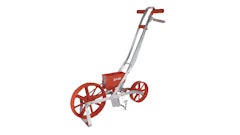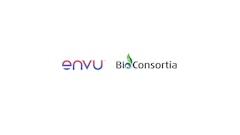
Cordie Morgan, category director at SiteOne Landscape Supply, and John Perry, president of Greene County Fertilizer Co., weigh in on what lawn care operators (LCOs) should know about fertilizer applications this season.
Green Industry Pros: What are the benefits of putting down fertilizer?
Morgan: Fertilizers stimulate the population growth of beneficial soil microorganisms essential for a healthy soil environment and the transformation of applied nutrients into plant-usable forms, improve the soil's physical characteristics (porosity and permeability), which enhance the ability of the plant to receive and utilize natural and applied nutrients, and replenish naturally occurring nutrients that have been used up or lost due to environmental conditions. Healthy plants are less prone to diseases, can tolerate light draught conditions and tend to recover quickly from insect damage.
Fertilizers create a growing and healthy turf from a density and vertical growth standpoint and a color standpoint. Application timing varies significantly by regionality and turf type. For example, bermudagrass typically stays dormant until mid-March, so you don't need to start fertilizing bermudagrass until mid-March or later. On the other hand, fescue is a cool-season turf; cool-season turf needs some early nitrogen at the beginning of the year to get a jump start on growth, meaning February (potentially) and early March.
Perry: The most beneficial reason to put down fertilizer is for the look, feel and health of the turf grass. The thicker the stand of grass, the more it can outcompete weeds and any other invasive infestation that there might be. So, fertilizing should be top priority for most people.
Green Industry Pros: When is the best time to apply fertilizers?
Perry: For the most part, when grass starts turning green or coming out of dormancy is the time to start fertilizing. The frequency varies by region. There are a lot of places in the country that are monthly. The average is still in the six- to eight-week range. That tends to hold up pretty well under scrutiny.
Morgan: Depending on which part of the country one lives in, fertilizer applications as the turf comes out of dormancy is an optimal time to get the turf on the correct growing path. At this time, the turf is typically in a weaker state due to diminished energy stores utilized during its dormant period—another late spring application of fertilizer to enhance reserves of stored energy in the roots. Summer is challenging for turf, with many environmental and insect/diseases impacting healthy growth. A summer fertilizer application is needed to provide essential nutrients during this critical season. Finally, an early and then late-fall application strengthens the plant after the summer stress. Then, it prepares the turf for dormancy by providing nutrients that enhance the plant's root system and increase nitrogen storage. The best time to apply fertilizer is when the plant is actively growing and taking in nutrients (during the growing season, which varies depending on geography). Soil testing reports provide the agronomic insights to help create lawn application programs that determine the nutrient needs required to maintain a healthy lawn.
Green Industry Pros: What are a few best practices LCOs should follow when putting down fertilizer?
Perry: Your soil type and your region are important because those can dictate how often or what types of soluble or insoluble fertilizer you should be using. Make sure it only stays on the grass. Don't put it where anything doesn't grow, and a measured approach is a better approach.
Morgan: Well-trained employees are critical to the success of adequately applied fertilizers. Test soil twice yearly to determine which nutrients are needed and in what amounts. Select a fertilizer formulation that will provide the essential nutrients from the soil analysis. Verify that your spreader is calibrated correctly for the applied fertilizer product. Educate the customer on the importance of each application.
(Editor's Note: See below for more best practices)
Green Industry Pros: How can LCOs educate their customers on fertilizer applications? And when should they do so?
Perry: A person who has never had a lawn care service doesn't know how often a lawn should be fertilized. I think it's important for an LCO to explain why they visit as often as they do. Whether that's feeding and fertilizing every round there or controlling weeds, it's important because most homeowners may fertilize a lawn once or twice a year thinking that's enough. So, describing the benefits and the overall look and feel that a homeowner is going to get by having a professional service really is the most important part. I don't believe that LCOs need to educate people on fertilizer itself. I believe they just need to share the result of what the work is doing so that the customer has an expectation.
Morgan: Engage with the customer from the initial visit to get them involved and explain current issues and strategies regarding short and long-term goals. Offer quality products and communicate their use and expected results. A customer is more approachable/appreciative when an LCO projects professional conduct/courtesy on-site. A well-designed website offers the customer a portal to the services you offer and the educational content you provide.
Discuss nutrient needs determined by a standard soil test. The best time to educate customers is during the renewal process, usually over the winter months in January or February (for current customers). For new customers, it is always a good practice to educate them on the products you intend to use before their first application.
Direct mail flyers and email blasts are great communication tools to help explain weed control and fertilizer programs to existing and potential customers. You can include within these direct mail flyers and email blasts optional services you can provide besides just the core weed control and fertilizer program, which includes bed weed control, mosquito control, flea and tick control, perimeter pest control, aeration, overseeding, fungicide programs, liquid aeration and others. These direct mail flyers and email blasts should go out before the season starts in late December and January. You may offer a prepay discount with those direct mail flyers and email blasts if customers sign up for a seven-step program before the end of February.
Green Industry Pros: Is there anything else you’d like to add?
Morgan: LCOs should always mention that they adhere to a responsible approach to lawn care applications and note any industry affiliations they are either actively involved in or support. LCOs should always ask for their customers' expectations and be upfront when providing realistic solutions.
Perry: It's less about the amount of fertilizer that goes down and more about the look of the turf. LCOs should not get hung up on pounds of material or budgeting out that way but actually base their business on a results-driven approach.
More best practices
- Understand all local laws and regulations.
- Choose the proper fertilizer that meets the needs to maintain optimum plant health.
- Always follow the instructions listed on the product label.
- Start with a pH-balanced soil and apply nutrients based on standard soil test results. The soil test can help determine the amount of nutrient(s) needed to maintain optimum plant health.
- Calculate the amount needed.
- Review weather conditions before application to avoid a potential runoff, misapplication on windy days and added stress during periods of drought.
- Always calibrate your application equipment and keep it in good working order.
- Wear the proper personal protection equipment as noted on the product label.
- Maintain required buffer distances between the application site and designate wetland areas (where applicable).
- Remove (sweep) excess material from walkways and driveways.



















